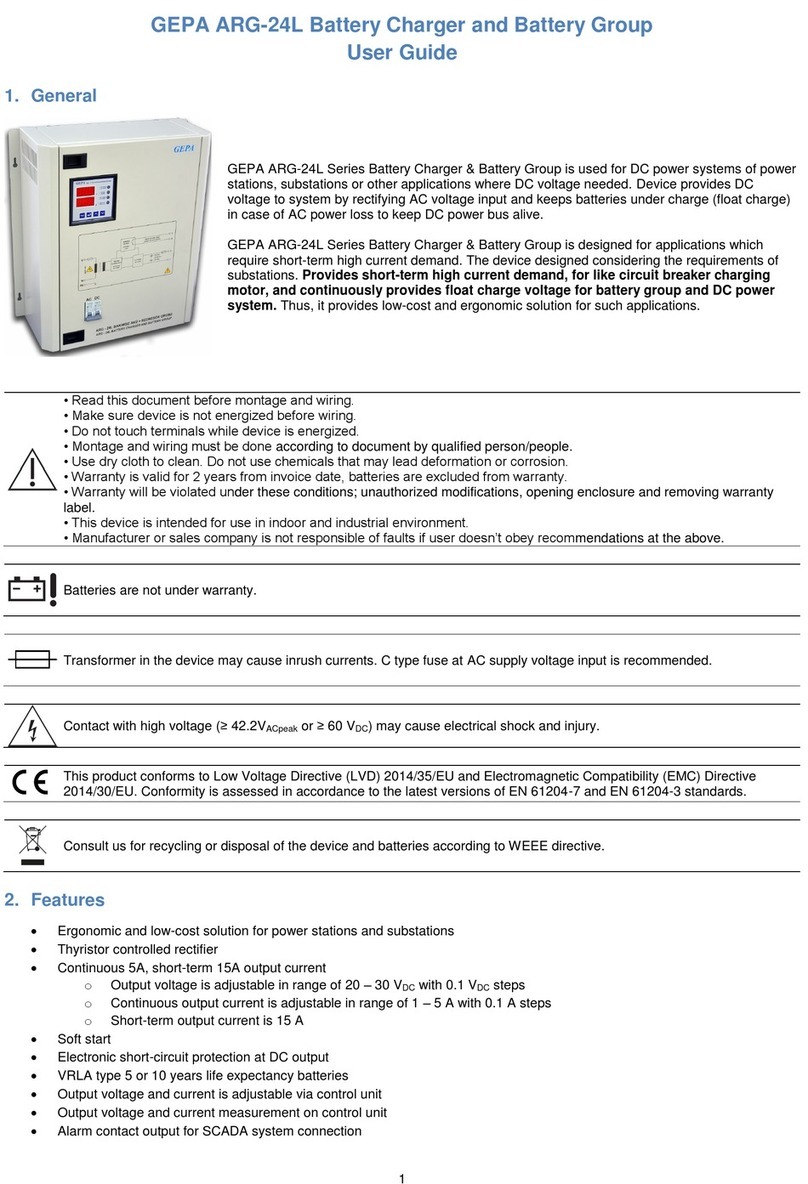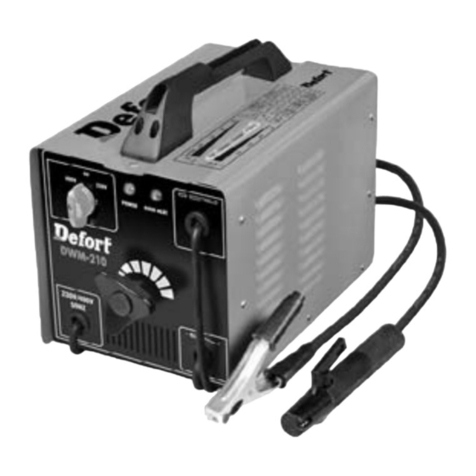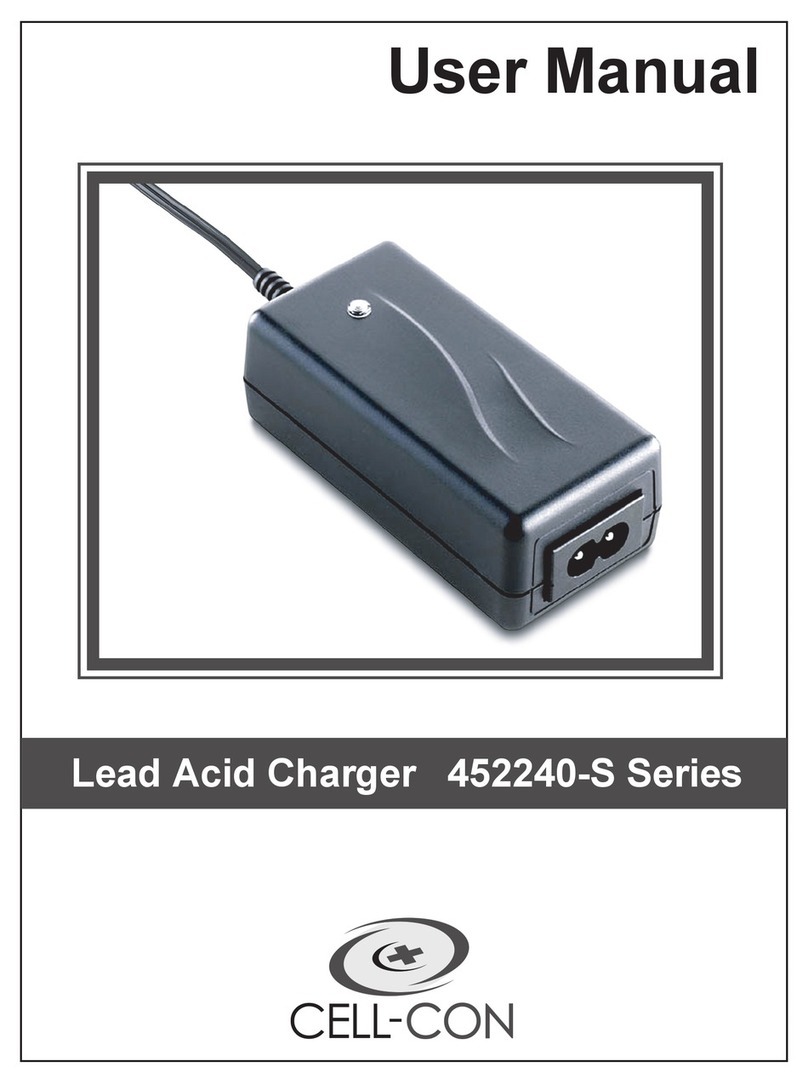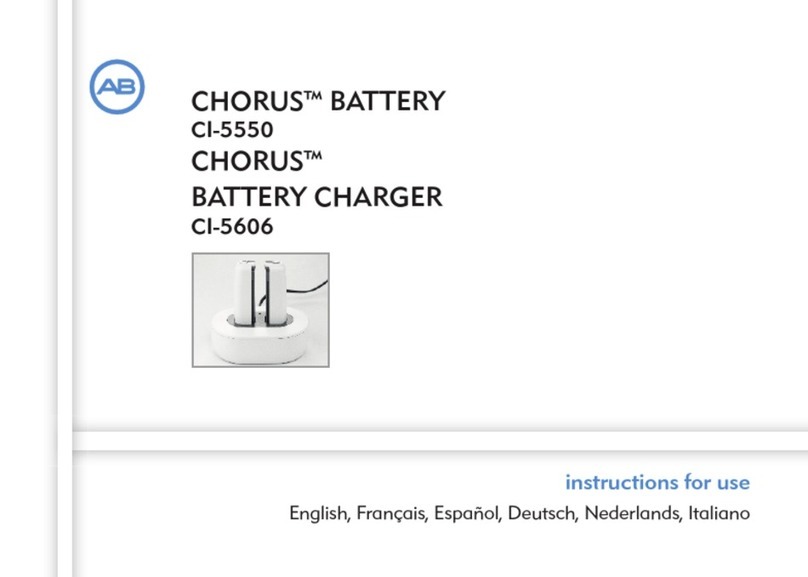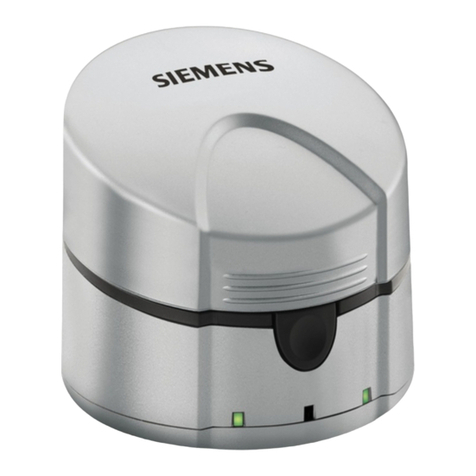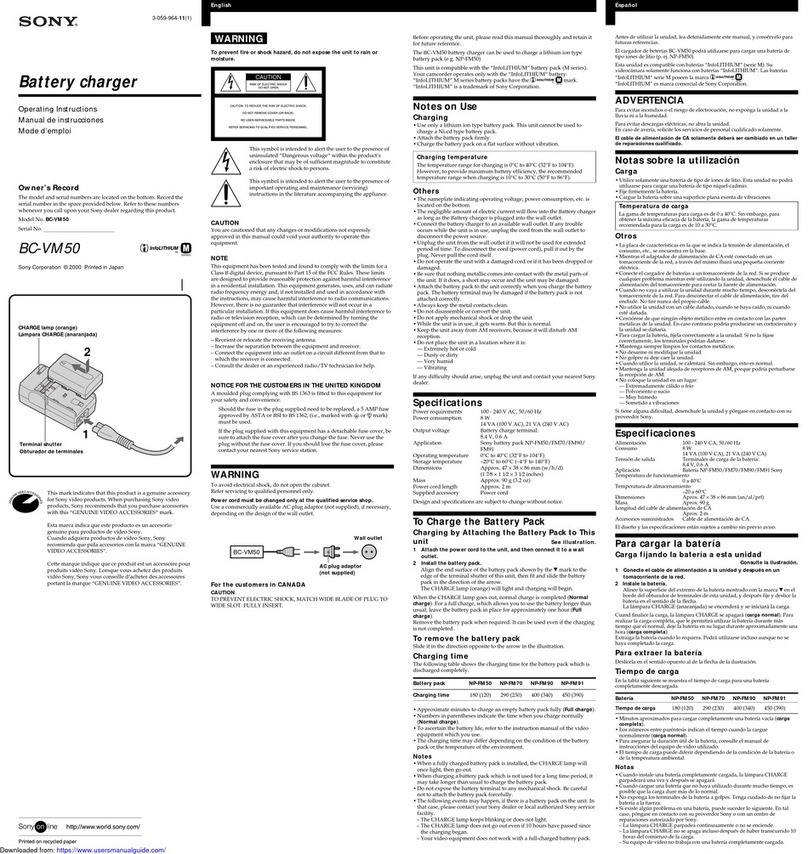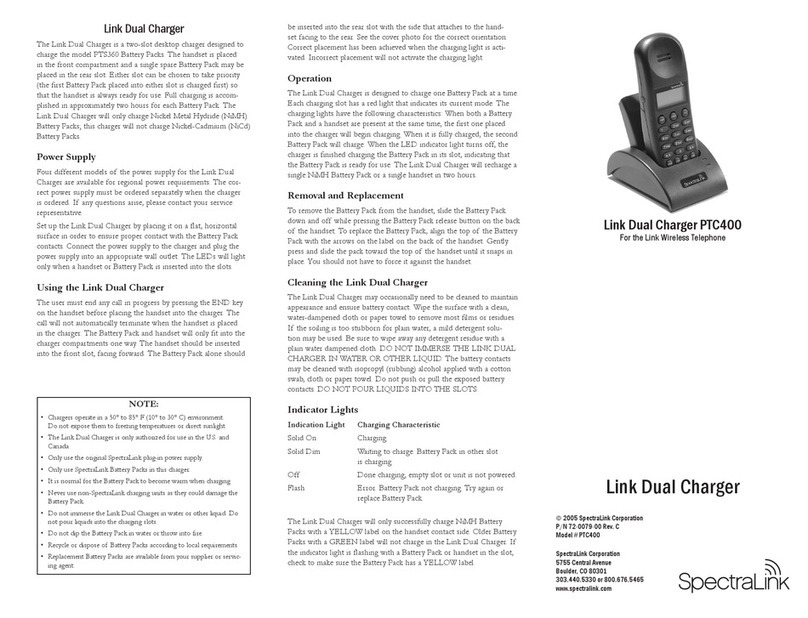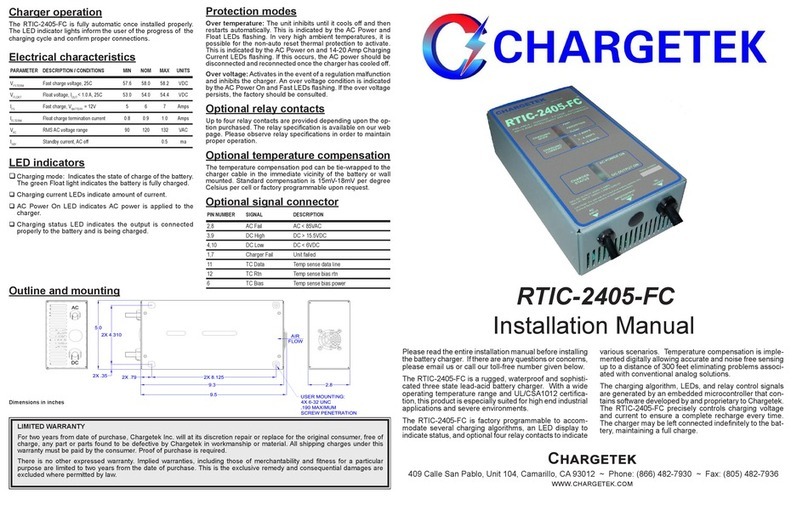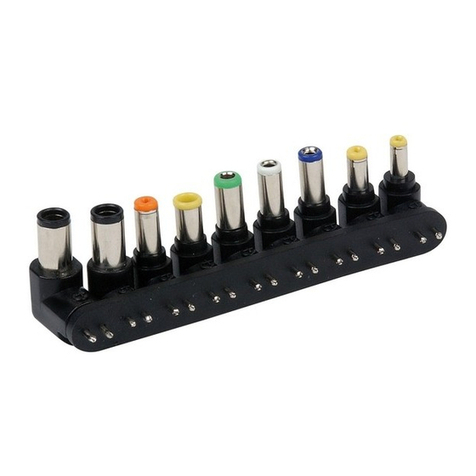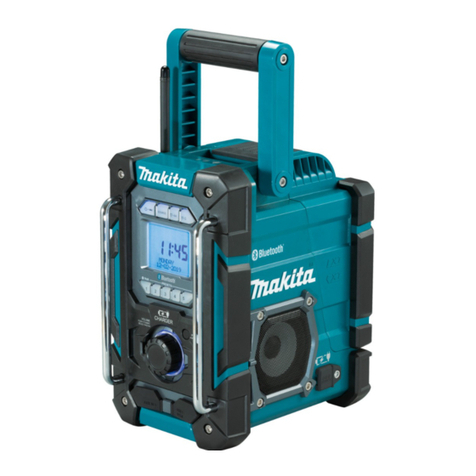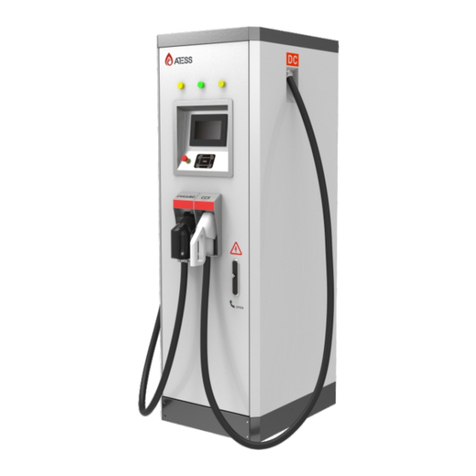GEPA ARG-24 Series User manual

GEPA
ARG Series
Battery Charger with Battery Group
User Guide

• Read this document before montage and wiring.
• Make sure device is not energized before wiring. Do not touch terminals while device is
energized.
• Montage and wiring must be done according to document by qualified person/people.
• Use dry cloth to clean. Do not use chemicals that may lead deformation or corrosion.
• Warranty is valid for 2 years from invoice date, batteries are excluded from warranty.
• Warranty will be violated under these conditions; unauthorized modifications or using
inappropriate battery group with wrong parameterization.
• This device is intended for use in indoor and industrial environment.
• Manufacturer or sales company is not responsible of faults if user doesn’t obey
recommendations at the above.
• This is a Class A product. In a domestic environment, this product may cause radio
interference, in which case the user may be required to take adequate measures.
Contact with high voltage (≥42.2VACpeak or ≥60 VDC) may cause electrical shock and injury.
This product conforms to Low Voltage Directive (LVD) 2014/35/EU and Electromagnetic
Compatibility (EMC) Directive 2014/30/EU.
Consult us for recycling or disposal of the device and batteries according to WEEE
directive.
Manufacturer Contact Details
Name:
GEPA Elektronik San. ve Tic. Ltd. Şti.
Address:
Zubeyde Hanim Dist. Sebzebahceleri St. No:93/36 Iskitler 06070
Altindag / Ankara, Turkey
Web Site:
www.gepaelk.com/
e-mail:
gepa@gepaelk.com
Telephone:
+90 312 384 1085
Fax:
+90 312 384 0436

Table of Contents
1. General............................................................................................................................................1
2. Functions.........................................................................................................................................2
2.1. Rectification...............................................................................................................................2
2.2. Battery Charging .......................................................................................................................2
2.3. Metering....................................................................................................................................3
2.4. Alarm and Annunciation ............................................................................................................3
2.5. Supervising ...............................................................................................................................3
2.5.1. Temperature Supervision....................................................................................................3
2.5.2. Fan Fault Supervision.........................................................................................................3
2.5.3. Battery Lead Supervision....................................................................................................3
2.5.4. Deep Discharge Protection .................................................................................................4
2.5.5. DC Leakage Supervising.....................................................................................................4
2.6. DC Source Mode.......................................................................................................................4
2.7. Autonomous Battery Maintenance.............................................................................................4
2.7.1. TEDAŞ (Turkish Electricity Distribution Authority) Method...................................................4
2.7.2. Equalize Timer Mode Method..............................................................................................4
2.8. Surge Protective Devices ..........................................................................................................5
2.9. Redundant Operation................................................................................................................5
2.10. Remote Monitoring..................................................................................................................5
3. Commissioning................................................................................................................................5
3.1. Montage & Wiring......................................................................................................................5
3.2. Monitoring and Settings.............................................................................................................8
3.2.1. Default Screen....................................................................................................................8
3.2.2. Muting Buzzer Temporarily .................................................................................................8
3.2.3. Editing Setting Parameters..................................................................................................9
3.2.4. Setting Parameters ...........................................................................................................10
4. Technical Specifications.................................................................................................................12
5. Order Code....................................................................................................................................12

1
1. General
ARG Series Battery Charger with Battery Group is specifically designed to be used in power stations
and substations. The device combines battery charger and battery group in one cabinet; provides a
compact solution for space constraint facilities.
SCR based battery charger rectifies AC voltage and to supply DC supplied components and keep
batteries charged. Charged battery group ensures DC supply continuity in case of power outage, also
provides high current demands when battery charger may not be able to handle (ex: circuit breaker
spring charging).
Battery charger and battery group in one cabinet
Microcontroller controlled SCR (thyristor) rectifier
24/48/110V voltage output and customizable current output and battery group capacity
Wide input voltage tolerance
Floating or equalizing charge
Independent and adjustable battery charge and total system current output
Electronic short-circuit protection at DC output
Soft start
MCB at 10kA breaking capacity at AC input, DC output(s) and battery output with auxiliary
contacts
DC leakage detection
Fan forced ventilation
Battery lead supervision
Deep-discharge protection (standard at 24V)
VRLA batteries with 10 –15 years lifespan expectancy
Easy access to battery group with drawer system (only 24V, 18/26Ah model)
Audible and visual alarm announce
HMI with legible 2.6” LCD
Eliminates panel meters; input and output measurements are displayed on HMI
Authorization with 4-digit password
Alarm contact outputs with 14 different alarms (optional)
Communication with Modbus RTU protocol via isolated RS-485 physical interface (optional)
Surge protection devices for transient suppression (optional)

2
2. Functions
Simplified block schema of ARG Series Battery Charger with Battery Group is given at the below. ‘*’
marked functions are optional.
2.1. Rectification
Microcontroller controlled 2-thyristor / 2-diode full bridge rectifier circuit and input isolation transformer
is used for rectification.
DC load and battery charging is controlled separately. An L-C based low pass filter ensures low ripple
on DC output. Electronic current limiting limits output at In, also protect the device by limiting current
and minimizing voltage in case of short-circuit at output. Output voltage, total current and battery
current limits are adjustable.
Cooling is ensured by proper passive cooling blocks and a digital temperature controlled fan. Fan is
supplied from AC input and controlled by microcontroller according to digital temperature sensor
measurement. Operating temperature is adjustable.
2.2. Battery Charging
Two charging modes are available. User is responsible to check battery specifications for floating and
equalizing charge limits if battery group is not montaged and wired by manufacturer or built-in.
Float Charge
Float charge mode compensates battery self-discharge and keep battery fully charged at maximum
capacity. Maximum charge current is 0.1C, ex. 2.6A for 26Ah, for most VRLA batteries.
Equalizing Charge
This mode brings all battery cells voltage at the same level at higher voltage by charging them with
higher current. Equalizing charge might remove sulfation on plates, thus makes battery capacity fully
available. Maximum charge current is 0.3C, ex. 7.8A for 26Ah, for most VRLA batteries.

3
Default limits (0.1C and 0.3C) are determined for VRLA batteries.
Refer to battery datasheet to verify maximum charge current limits.
2.3. Metering
The device control unit measures following parameters
• AC input voltage, • DC output voltage, • In-cabinet temperature.
• AC input frequency, • Total system output current,
• AC input current, • Battery charge current,
2.4. Alarm and Annunciation
14 different alarms are available. All alarms are shown on control unit screen and some are available
as LEDs on control unit. An internal buzzer is available for local alarm annunciator.
Optional alarm module has NO contacts and LEDs for each alarm. Descriptions are given at the
below:
• For DC leakage, see section ‘2.5.5. DC Leakage’.
• AC Loss will trigger if AC supply not applied or detected.
• AC High/Low will trigger if AC input voltage is out of preset limits.
• DC High/Low will trigger if DC output voltage is out of preset limits.
• For battery lead supervision or battery continuity, see section ‘2.5.3. Battery Lead Supervision’.
• Replace battery will trigger if battery capacity is under 50%. While AC is not present and load is
supplied from battery group, control unit calculates battery group capacity according to Peukert’s law.
This device is intended to use with AGM or gel VRLA batteries, so coefficient is 1.1.
• Overload will trigger if total current output is limited at maximum current for 1 hour.
• Over-temperature will trigger if in-cabinet temperature is over preset limit.
• For fan fault, see section ‘2.5.2. Fan Fault Supervision’.
• Common alarm will trigger if any alarm condition described above occurs, except AC loss.
2.5. Supervising
Each supervising function triggers an alarm which will be shown on control unit screen or available on
remote monitoring modules.
2.5.1. Temperature Supervision
If in-cabinet temperature (heating components in particular) reaches over preset value, over-
temperature alarm will be triggered.
2.5.2. Fan Fault Supervision
Fan fault alarm will trigger if fan fails to operate.
2.5.3. Battery Lead Supervision
Battery charger continuously supervises its connection to battery group. In case of disconnection,
device announces audible and visible alarm from control unit LED, LCD and related alarm contact
output. Battery lead supervision is able to detect following faults:
• Corrosion or shedding occurs at battery plates during usage and it’s unavoidable. Because of
corrosion, plate may lose it conductance to battery lead. In series connected battery group even one
plate loses connection, battery charger and battery group disconnects from system. In this case,

4
battery group doesn’t able to get charge or provide power.
• If charger to battery group connection is faulty, broken cable or not properly connected multi-contact
plug socket with models with drawers.
2.5.4. Deep Discharge Protection
If AC input is not present and battery group voltage drops to preset deep discharge voltage level, this
module disconnects battery group from load to prevent unrecoverable deep discharge state.
Battery group is automatically reconnected to battery charger after AC input voltage is applied.
This feature is standard in ARG-24 and optional in ARG-110.
2.5.5. DC Leakage Supervising
DC leakage (+) or (-) alarms will trigger if 5 mA current measured between positive (+) or negative (-)
terminals of battery for 1 s.
DC leakage detection circuit forms a connection between earth and DC output through
resistance. DC leakage connections should be unplugged before insulation tests.
2.6. DC Source Mode
This mode is available for use the battery charger for laboratory purposes or similar. Output current
limit is adjustable up-to 1.5 times of In.
Disconnect batteries before activating DC source mode.
2.7. Autonomous Battery Maintenance
Under normal conditions VRLA batteries doesn’t need any maintenance. Battery group should be
checked periodically in order to ensure batteries are available to service.
The device has two different autonomous battery maintenance methods.
2.7.1. TEDAŞ (Turkish Electricity Distribution Authority) Method
This method is not recommended in substation or power station applications.
If battery voltage drops to critical limit during discharge and power outage occurs,
protection equipment may not be supplied adequately. This method is inactive by default.
Use ‘Equalize Timer Mode’ instead of this maintenance program.
This maintenance program is applied periodically at definite time of day. Battery charger stops and
load is only supplied from battery group. Battery group is discharged until preset voltage for allowed
duration and then charged again. Setting parameters are at the below:
• Annual Maintenance Quantity: Period on yearly basis, ex. 4 means every 3 months.
• Battery Discharge Voltage: Battery group is discharged until voltage drops to preset voltage.
• Maintenance Duration: Maximum duration of maintenance in hours. Discharge process is cancelled if
duration exceeds.
• Maintenance Start Time: Maintenance starts on preset time of day, preferably when power outage
risk is lowest.
2.7.2. Equalize Timer Mode Method
Battery charger periodically applies equalizing charge for preset equalizing charge time to prevent
sulfation on battery plates. This method is active by default.

5
2.8. Surge Protective Devices
Surge protective devices (SPD) are used as transient suppressers at AC input. SPDs will be installed
before isolation transformer between L-PE and N-PE.
This module is optional.
Lightning protection shall be coordinated to make it effective; used SPDs are Class III
according to IEC 61643-1 and not effective alone to protect devices in facility. Class I and
Class II also shall be installed in coordination for enough protection. Refer to IEC 62305 for
more information.
2.9. Redundant Operation
An ORing diode is installed at the DC output of battery chargers if redundant operation is required.
One with higher DC output voltage will be primary and other will be secondary/backup. In case of fault
in primary, secondary will supply load.
This feature is optional.
2.10. Remote Monitoring
Alarm module has 15 NO (Form A) contacts for 14 different alarms. Each alarm has status LED and
clearly visible from front panel. Contact terminals are accessible from front side and isolated from
other circuits. Following alarms are available:
• AC MCB switch off, • DC low, • Replace battery,
• DC or battery MCB switch off, • DC high, • Overload,
• DC (+) leakage, • AC low, • Over temperature,
• DC (-) leakage, • AC high, • Fan fault,
• AC loss, • Battery lead supervision, • Common alarm.
Common alarm is activated if any alarm condition occurs -except AC loss- and higher contact capacity
than others. Without AC or DC supply voltage this contact is normally closed, when supply applied if
there is no alarm, this contact changed to normally open.
Communication with Modbus RTU protocol via an isolated RS-485 physical interface is available. All
measurements, alarms and settings are accessible. Register map is available on request.
These features are optional.
3. Commissioning
3.1. Montage & Wiring
Avoid exposed to high humidity, dust, high ambient temperature location or high vibration. Allow at
least 15 cm clearance on sides for proper ventilation. Place the device to a solid base. Relatively
lighter models have bolt holes at the bottom to fix the device to floor, fix the cabinet to the ground with
bolts.

6
The device has two cable entries, one on the side and one at the bottom of cabinet.
Side entry which is next to MCBs and alarm module is easier to access.
If bottom entry is preferred:
oIn models with drawers, there are no obstacles between terminals and entry or use
cable spiral wrap as guide.
oIn models without drawers, use holes on battery shelves as cable guide.

7
Wiring schemas are given at the below. MCB Invaries according to input and output current.
Schema 1: Power connections of 24V with multiple DC outputs
Schema 2: Power connections of 110V and 24V
Schema 3: Alarm module connections with RTU

8
3.2. Monitoring and Settings
3.2.1. Default Screen
Default screen displays the following
parameters:
• In-cabinet temperature,
• Mute symbol if buzzer is disabled,
• Fan symbol if operating,
• Time of day,
• AC input voltage (Vg), frequency (Fg),
• DC output voltage (U),
• Total current output (IS),
• Battery charging current (Ia),
• Sliding alarm notifications.
Following alarms and status information is shown with LEDs:
• Charging mode LED is on and steady if floating or flashing if equalizing charge mode is active.
• AC High/Low and DC High/Low LEDs are; on and steady if over or flashing if under preset value. If
both in preset limits LED is off.
• Bottom LED is on and steady if output current is limited and flashes if any of alarms is occurred.
Check default screen to see which alarms are occurred.
3.2.2. Muting Buzzer Temporarily
Press UP and DOWN buttons at the same time buttons to mute the buzzer for 30 min. Press again to
unmute or control unit unmute itself after 30 min.

9
3.2.3. Editing Setting Parameters
This example describes how to edit ‘DC Output Voltage’ parameter; also applicable for editing other
setting parameters.
1. On default screen press SET for Main Menu.
2. Press SET again to adjust any parameter on the screen. After pressing SET, cursor will be
move onto ‘U’ parameter.
3. Use UP and DOWN buttons to adjust the parameter. To cancel press ESC. Press SET to
move onto next parameter ‘I’.
4. Again, use UP and DOWN buttons to adjust the parameter or skip adjusting by pressing SET.
5. Verification dialog will be shown. Press SET to verify or ESC to revert the changes.

10
3.2.4. Setting Parameters
DC Output
Parameter
Description
Range
Step
Default
U
Output voltage for floating
charge.
20.0 –30.0 V for 24V
90 –130 V for 110V
0.1 V for 24V
1 V for 110V
27.6 V
124 V
I
Output current limit for
floating charge.
1.0 –InA
0.1A
In
Battery Charge Settings
Parameter
Description
Range
Step
Default
Battery Select
Charge limits are
determined automatically by
selecting used battery
group.
7 … 100, Manual
-
-
Float U
Output voltage for floating
charge.
20.0 –30.0 V for 24V
90 –130 V for 110V
0.1 V for 24V
1 V for 110V
27.6 V
124 V
Float I
Output current limit for
floating charge.
0.1 –(0.1C) A
0.1 –InA for Manual
0.1A
(0.1C) A
Equal U
Output voltage for
equalizing charge.
20.0 –30.0 V for 24V
90 –130 V for 110V
0.1 V for 24V
1 V for 110V
27.6 V
124 V
Equal I
Output current limit for
equalizing charge.
0.1 –(0.3C) A
0.1 –InA for Manual
0.1A
(0.3C) A
Equalize Charge
Parameter
Description
Range
Step
Default
Duration
Duration of equalizing
charge.
1 –9 hrs
1 hr
1 hr
Status
Status of equalizing charge
mode.
Active –Passive
-
Passive
DC Source Mode
Parameter
Description
Range
Step
Default
V3
Voltage output for DC
source mode.
20.0 –30.0 V for 24V
90 –130 V for 110V
0.1 V for 24V
1 V for 110V
27.6 V
124 V
I3
Current output limit for DC
source mode.
0.1 –InA
0.1A
In
Status
Status of DC source mode.
Active –Passive
-
Passive
Fan Control
Parameter
Description
Range
Step
Default
Temperature
Operating temperature of
fan cooling.
20 –99 ⁰C
1 ⁰C
35 ⁰C
Status
Status of fan control.
Active –Passive
-
Passive
Alarm Settings
Parameter
Description
Range
Step
Default
AC Under
Minimum AC input threshold
for alarm.
150 –210 V
1 V
190 V
AC Over
Maximum AC input
threshold for alarm.
230 –270 V
1 V
240 V
DC Under
Minimum DC output
threshold for alarm.
18 –25 V for 24V
81 –112 V for 110V
1 V
20 V for 24V
90 V for 110V
DC Over
Maximum DC output
threshold for alarm.
27 –34 V for 24V
121 –153 V for 110V
1 V
30 V for 24V
135 V for 110V
Over Temp
Over temperature alarm.
30 –99 ⁰C
1 ⁰C
70 ⁰C

11
Common Settings
Parameter
Description
Range
Step
Default
Buzzer
Status of alarm buzzer.
Active –Passive
-
Active
Language
Control unit interface
language.
Türkçe - English
-
Türkçe
Deep
Discharge
Threshold
Threshold of battery group
disconnection from load.
18 –27 V for 24V
82 –123 V for 110V
1 V
20 V for 24V
90 V for 110V
Equalize Timer Mode
Parameter
Description
Range
Step
Default
Period
Period of periodic equalizing
charge. Refer to “Equalize
Charge” menu duration for
duration.
1 –9 hrs
1 hr
1 hr
Status
Status of periodic equalizing
charge.
Active –Passive
-
Active
Battery Maintenance (TEDAŞ Maintenance Method)
Parameter
Description
Range
Step
Default
Annual
Battery
Maintenance
Quantity
This parameter determines
how many times this
method will be applied.
1 –6
1
4
Maintenance
Voltage
Minimum battery voltage to
stop discharge.
21 –24 V for 24V
94 –108 V for 110V
1 V
22 V for 24V
100 V for 110V
Maintenance
Duration
Duration of maintenance
method if battery voltage
doesn’t drops under prior
setting.
2 –48 hrs
1 hr
48 hrs
Maintenance
Start Time
Time of day to start
maintenance.
HH:MM
-
00:30
Password Settings
Parameter
Description
Range
Step
Default
Password
4-digit password to prevent
unauthorized access to
control unit.
0 –9999
1
0000
Status
Status of password
authentication.
Active –Passive
-
Active
Date / Time Settings
Parameter
Description
Range
Step
Default
Date
In DD/MM/YY format.
Time
In HH:MM format.
DST Setting
Status of day light saving.
Active –Passive
-
Passive

12
4. Technical Specifications
24V / 25A
110V / 25A
Input Voltage
230 VAC or 120 VAC (±%20)
230 VAC or 120 VAC (±%20)
Input Frequency
50 or 60 Hz (±%5)
50 or 60 Hz (±%5)
Input Current
5.25 Amax
27 Amax
Power Factor
0.82
0.66
Output
Voltage
Nominal
27.6 VDC
124 VDC
Range
20.0 –30.0 VDC
90 –130 VDC
DC Source Mode
20.0 –30.0 VDC
90 –130 VDC
Output
Current
Nominal
In
In
Range
1.0 - In
1.0 - In
DC Source Mode
1 –1.5 In
1 –1.5 In
Output Power
700 W
3200 W
Output Ripple
<5% (w/o battery)
<5% (w/o battery)
Output Filtering
L-C Filter
L-C Filter
Efficiency
≤%75
≤%81
Mini Circuit Breaker
Single or Double Pole, ICN=10kA, C-Type
Double Pole, ICN=10kA, C-Type
Cooling Method
Fan forced (AF)
Operating Temperature
(-20) –(+55) °C
Relative Humidity
< % 95 RH (without condensation)
Pollution Degree
III
Alarm Contacts
14 NO mechanical contact, 3A/30VDC or 5A/250VAC, 1385 VA / 90 W
1 NC mechanical contact, 5A/30VDC or 10A/250VAC, 2500 VA / 150 W
750 VRMS breakdown between open contacts
RS-485 Port
2 wire, isolated
Insulation
Independent
Circuits
AC Input –DC Output –Earth –Alarm Contacts –RS-485
Dielectric
Withstand
2 kVAC / 50 Hz, 1 min (all independent circuits, including SELV circuits)
Reference Standard(s)
IEC 60146-1-1
5. Order Code
ARG –24 25 SD 26
Battery Capacity: 18 … 150 Ah
Optional Features
• S – Alarm Contact Outputs
• H – RS-485 Communication
• D – Deep-Discharge Protection
• V – AC Surge Protective Device
• P – Parallel ORing Diode
Output Current: 5 … 40 A
Output Voltage: 24 / 48 / 110 V

GEPA
GEPA Elektronik San. ve Tic. Ltd. Şti.
Zubeyde Hanim Dist. Sebzebahceleri St. No:93/36 Iskitler 06070 Altindag / Ankara, Turkey
Tel: +90 (312) –341 –4104 • Fax: +90 (312) – 384 –0436
www.gepaelk.com • gepa@gepaelk.com
Rev.4; 04/19
This manual suits for next models
1
Table of contents
Other GEPA Batteries Charger manuals
